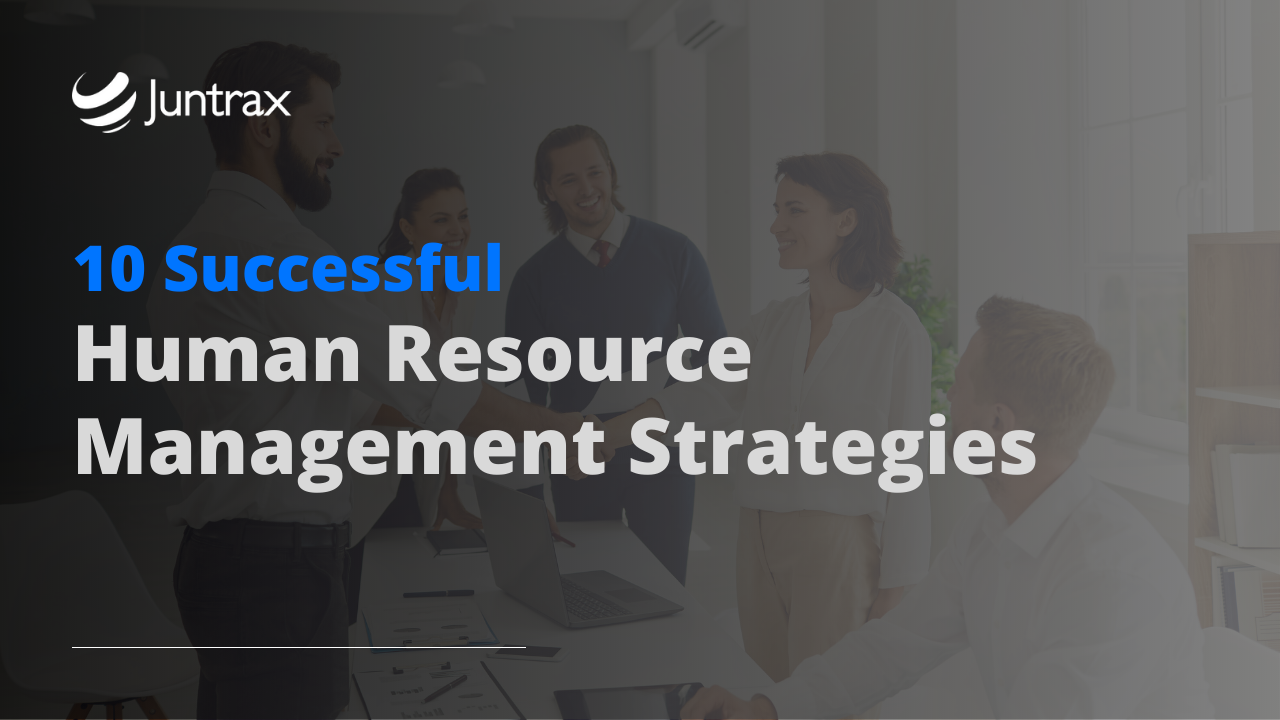10 Successful Human Resource Management Strategies

In today’s rapidly evolving business landscape, effective Human Resource Management has become more crucial than ever before. As organizations strive to maximize their productivity, attract top talent, and ensure employee satisfaction, it is imperative to implement strategic HR practices that align with business goals.
This article will delve into the 10 essential Human Resource Management strategies that can help businesses thrive and achieve long-term success.
From recruitment and talent acquisition to performance management and employee development, these strategies cover a wide range of HR functions integral to building a strong and motivated workforce.
By adopting these strategies, businesses can not only optimize their HR processes but also create a positive work culture that fosters innovation, collaboration, and growth.
So, whether you’re a seasoned HR professional looking to enhance your skills or a business owner aiming to improve your organization’s HR practices, this article will provide valuable insights and actionable tips to elevate your human resource management game and drive business success.

The Role of HR in Business Success
Human resource management plays a vital role in the success of any organization. HR professionals are responsible for managing the organization’s most valuable asset – its people. They ensure that the right individuals are hired, trained, and developed to support the company’s goals and objectives. HR professionals also play a crucial role in creating a positive work culture and fostering employee engagement. By aligning HR strategies with business objectives, organizations can achieve higher levels of productivity, innovation, and employee satisfaction. Effective HR management helps businesses attract and retain top talent, reduce turnover, and improve overall organizational performance.
Recruitment and Hiring Strategies
Recruiting and hiring the right people is the foundation of a successful organization. To attract top talent, HR professionals should develop a comprehensive recruitment strategy that includes job postings on relevant platforms, targeted advertising, and leveraging professional networks. They should also focus on creating an attractive employer brand that highlights the organization’s values, culture, and opportunities for growth. In addition, implementing a rigorous selection process that includes behavioural interviews, skills assessments, and reference checks can help ensure that the right candidates are hired for each role. By investing time and effort in effective recruitment and hiring strategies, organizations can build a talented and diverse workforce that drives business success.
Training and Development Programs
Investing in employee training and development is essential for both individual growth and organizational success. HR professionals should design and implement comprehensive training programs that address the specific needs of employees and the organisation as a whole. These programs can include technical skills training, leadership development, and soft skills workshops. By providing opportunities for employees to enhance their knowledge and skills, organizations can improve employee performance, productivity, and job satisfaction. Training and development programs also contribute to employee retention by showing a commitment to their growth and advancement within the organization.
Performance Management and Evaluation
An effective performance management system is crucial for driving employee engagement, productivity, and accountability. HR professionals should establish each employee’s clear performance expectations and goals and provide regular feedback on their progress. Performance evaluations should be conducted on a regular basis to assess employee performance and identify areas for improvement. By recognizing and rewarding high performers and providing constructive feedback to underperforming employees, organizations can create a culture of continuous improvement and motivate employees to reach their full potential. Performance management systems should also include mechanisms for career development and succession planning to ensure that employees are prepared for future leadership roles.
Also, Read out blog Smart Ways for SMEs to Handle HR Activities
Employee Retention and Engagement Strategies
Retaining top talent is a key challenge for many organizations. HR professionals should develop effective employee retention strategies that focus on creating a positive work environment, offering competitive compensation and benefits, and providing opportunities for growth and development. Employee engagement surveys can help identify areas of improvement and measure employee satisfaction and engagement levels. By addressing the concerns and needs of employees, organizations can improve retention rates and create a loyal and motivated workforce. Implementing employee recognition programs, promoting work-life balance, and fostering a sense of belonging and purpose can also contribute to higher levels of employee engagement and satisfaction.
Creating a Positive Work Culture
Positive work culture is essential for attracting and retaining top talent and driving business success. HR professionals should focus on creating a work environment that values diversity, inclusion, and collaboration. They should promote open communication, trust, and mutual respect among employees. Encouraging teamwork, celebrating achievements, and fostering a sense of purpose can contribute to a positive work culture. HR professionals should also lead by example and ensure that organizational policies and practices align with the desired work culture. By prioritizing a positive work culture, organizations can enhance employee engagement, productivity, and overall performance.
Effective Communication and Employee Relations
Effective communication is the foundation of a successful organization. HR professionals should establish clear channels of communication and ensure that employees are well-informed about organizational goals, policies, and changes. They should encourage open dialogue and provide opportunities for feedback and suggestions. HR professionals should also play a role in resolving conflicts and promoting positive employee relations. By fostering effective communication and positive employee relations, organizations can improve teamwork, collaboration, and employee satisfaction.
Compensation and Benefits Strategies
A competitive compensation and benefits package is essential for attracting and retaining top talent. HR professionals should conduct regular market research to ensure that the organization’s compensation structure is aligned with industry standards. They should also develop comprehensive benefits programs that address the needs of employees and provide a competitive edge. In addition, HR professionals should design performance-based incentive programs that reward top performers and encourage employee motivation and engagement. By offering a competitive compensation and benefits package, organizations can attract and retain the best talent in the industry.
HR Technology and Automation
Leveraging technology and automation can significantly enhance HR processes and efficiency. HR professionals should adopt HR management systems and software that streamline administrative tasks, such as payroll processing, leave management, and performance evaluations. These systems can also provide valuable data and insights for decision-making and strategic planning. HR professionals should stay updated with the latest HR technology trends and leverage tools such as applicant tracking systems, learning management systems, and employee self-service portals to improve HR operations. By embracing technology and automation, organizations can optimize HR processes, reduce manual errors, and free up HR professionals to focus on strategic initiatives.
Conclusion
Effective Human Resource Management is crucial for business success in today’s competitive landscape. By implementing the 10 essential HR management strategies discussed in this article, organizations can optimize their HR processes, attract top talent, and create a positive work culture that fosters innovation, collaboration, and growth. From recruitment and talent acquisition to performance management and employee development, these strategies cover a wide range of HR functions integral to building a strong and motivated workforce. HR professionals and business owners can use these strategies as a guide to enhance their HR practices and drive long-term business success. So, start implementing these strategies today and watch your organization thrive in the ever-evolving business world.